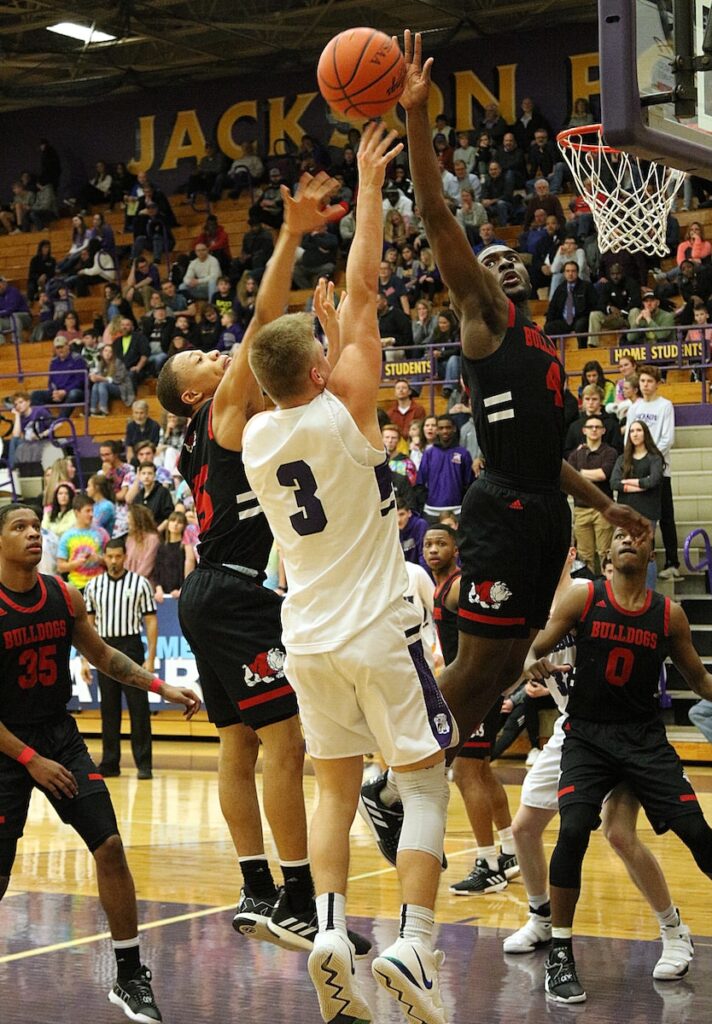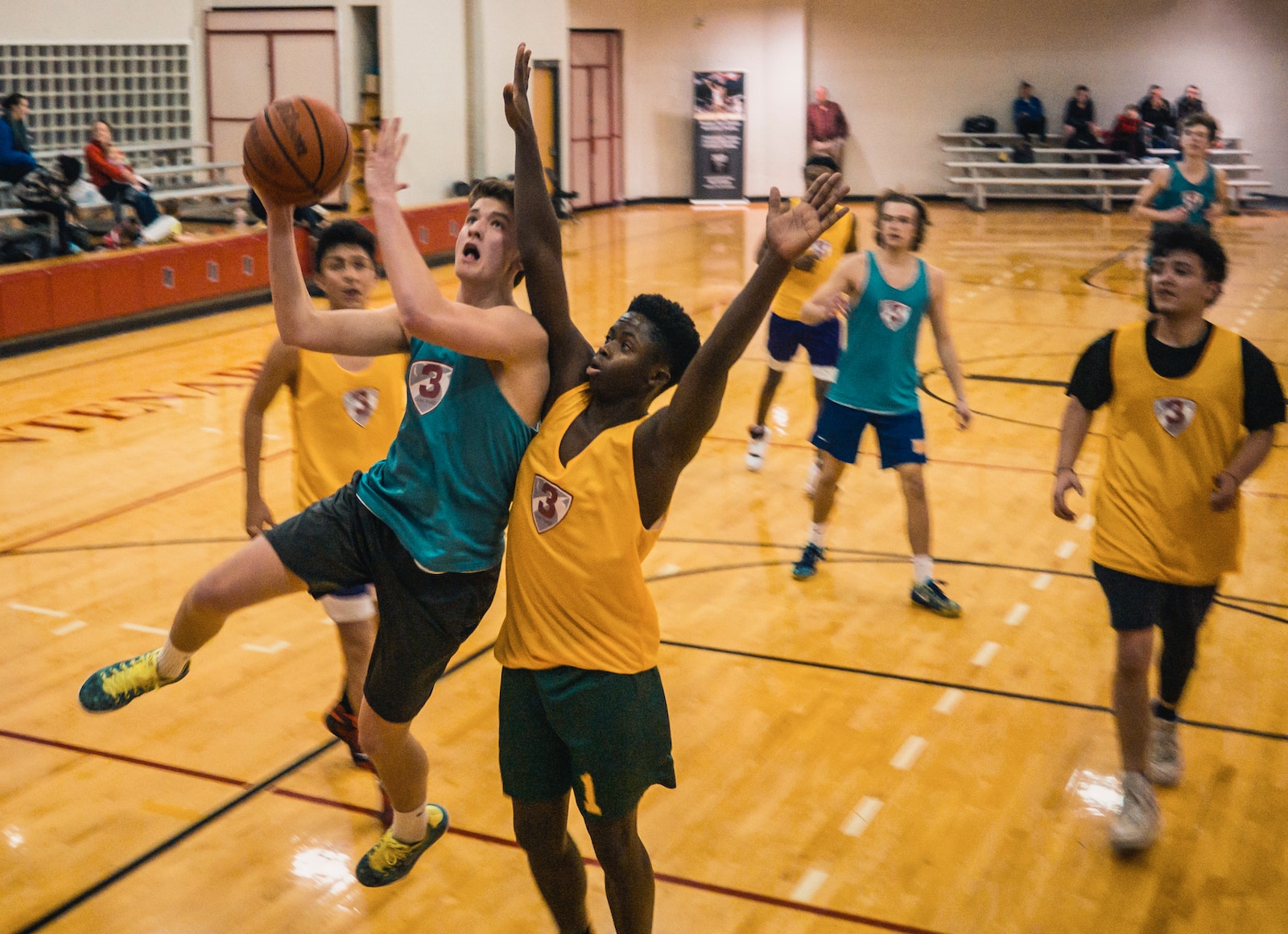Introduction
New fans of basketball might be a little confused as to how the traveling violation works at both a minor and professional level. It makes you wonder how many steps forward that you are legally allowed to do before a referee hits you with a violation. That’s why we plan to answer this one specific question.
Can you take two steps and stop in basketball? Or will it simply be deemed a traveling violation? The answer is yes, you can. However, you can only do so when in motion. If you are standing still when you get possession of the ball and then take two steps, you will be called for a travel.
You Can Only Take Two Steps
Essentially, the most steps that you will ever be able to take once you stop dribbling are two. Sometimes, referees miss when players take a few more, but that doesn’t change the basis of the rule. Don’t let those videos on YouTube fool you, traveling violations are still very much called these days. You just often see missed calls at a high level such as the NBA as opposed to blatant and obvious travels. You want to be dribbling the basketball constantly when moving.
If you take two steps while running and dribbling, you will not be called for any type of infraction. Again though, that’s when you’re in motion. If you are standing completely still, the rules alter. It also becomes incredibly apparent that you are traveling if you aren’t moving. Referees would be able to see very clearly that you have taken two steps if you receive the ball at a standstill and proceed to start without dribbling.
The Gather Step
There actually is a way for players to sneak in a third step before getting called for a travel, and to do so legally. The way to accomplish this is by performing what is now called a gather step. A gather step is basically the step you take with the basketball as it’s coming into your hands. So, if you take one step as the ball is coming into your hands and you plan to stop dribbling, that will be a gather step. That means, once the ball is firmly in your hands and you are no longer dribbling, you have two more steps available. This rule was likely implemented due to it confusing officials on when to start counting steps following a player picking up the ball.
A gather step can be confused with a hop step. A hop step is when a player picks up the ball in the same motion as a gather step, but they jump forward instead. This isn’t taking a jump shot, so it wouldn’t be called a violation. It would be thought of as a dribble move forward, and only becomes a travel if you proceed to take another step in any direction after landing. You can pivot, though that is all that’s allowed.
Players Are Free To Pivot After Two Steps
As we’ve covered already, a player is forced to come to a stop after he/she takes two steps without dribbling, including the gather step. When you stop dribbling, this doesn’t mean that you are forced to stop moving forever. You must stop in place, but one foot will be labeled the pivot foot, and the other will be free to maneuver.

Technically, you aren’t really moving out of that one position, as your pivot foot is unable to leave the ground in any capacity in this situation. However, the other foot can help you turn and lean in a different direction without taking additional steps to create the violation. Pivots don’t just come in the form of motion, as you would always have a pivot foot established whether you are moving or not moving. If you receive a pass standing still, your pivot foot will be established already. When you’re actually playing or watching basketball though, it will usually come easily which foot is the established pivot.
Does Falling Count As A Step?
Yes, falling does count as a step. The problem is that you can’t take any additional ones once you do fall. For example, if you are running with the basketball and trip forward, landing on the ground. That will be essentially counted as a step, and you will be unable to move anymore. That means you have to pass the ball to a teammate or shoot it from where you are currently sitting down. You are unable to get back onto your feet and resume your dribbling motion. It should also be noted that you usually don’t see travels called very often for a player that hits the deck. More often than not, they don’t stumble forward and take additional steps. If you do stumble without dribbling and hold the ball, then yes, it would be a travel if you fall or not.
What Happens If You Take More Than Two Steps?
Well, if you happen to take more than two steps without dribbling, on purpose or not, the punishment isn’t too harsh. The current play would be whistled dead by the officials and then the ball would be awarded to the other team. The other team would be given a throw-in to get the game started again, and it would be on the out-of-bounds line where the infraction was most closely committed. You will not get thrown out of the game for a travel and the other team will not receive free throws over it either. It’s simply a dead ball and the ball exchanges hands.
In the NBA, the team that gets awarded the ball does have some limitations on where the ball gets spotted on the throw-in. The NBA says that the spot can’t be any closer to the baseline than it is to the extended free throw line. This is also something that you will likely not even notice when watching or playing, as the officials take care of this, but it’s something interesting to note regarding how a traveling violation is handled.
